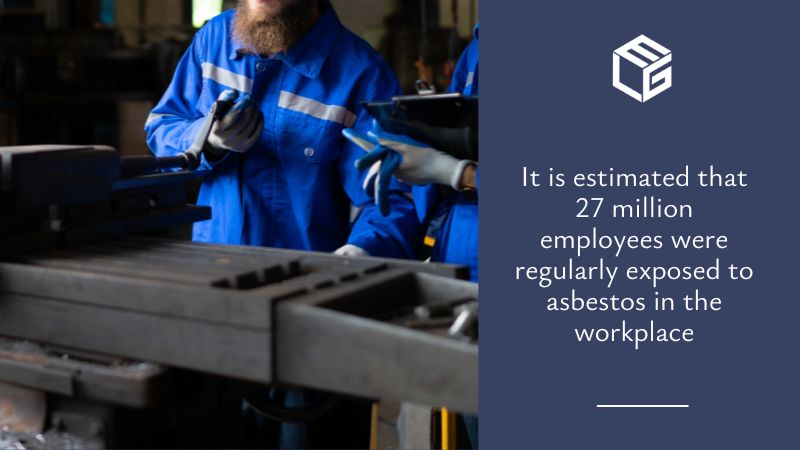
By Treven Pyles
Posted on November 06th, 2020

The causal association between asbestos exposure and the development of malignant illnesses has been established by various epidemiologic studies. Some epidemiologic studies of asbestos-exposed workers indicated that the carcinogenicity of asbestos is dependent on fiber type, length, and exposure parameters.
The toxicological and pathological consequences of asbestos exposure are dependent on several fiber parameters including the fiber dimensions and density of the concentration of the fibers. In order to assess the toxic potential of asbestos fibers, recent studies showed that several air samples collected in buildings - residential, commercial, or industrial - equipped with asbestos-containing materials, contained short asbestos fibers (SAF) in very high concentrations. Countable asbestos fibers as defined by the World Health Organization's method:
- Length: > 0.005 mm
- Width: < 0.003 mm (average)
- Length/width ratio - greater than 3:1
Increasing lung cancer risk was observed in workers exposed to longer chrysotile asbestos fibers
Occupational studies usually provide little insight into questions of asbestos fiber dimensions and health risks because workers were often exposed to a wide range of fiber sizes. However, it has been noted that the differences in lung cancer risk associated with certain industries may be the result of differences in fiber size distributions.
While mining and milling involved exposure to raw asbestos that encompassed a wide range of fiber types and lengths, the cement, friction, and textile manufacturing industries relied on processed fibers of a relatively specific length distribution. Cement and friction manufacturing industries primarily used short chrysotile asbestos fibers, while the textile industries required the use of much longer fibers.
How do asbestos fibers enter the lungs?

The speed at which asbestos fibers settle in the air is mainly dependent on their diameter. Fibers less than 0.003 mm in diameter will remain suspended in the air for long enough to reach deep into the lung. Long thin fibers are just as likely to penetrate into the lungs as short thin ones.
Asbestos fibers may easily be released into the air by the manufacture, repair, and - more recently - the destruction of materials containing asbestos.
Natural winds and ventilation systems used during work create exposure risk for disturbed and airborne asbestos fibers, causing them to be inhaled by those working in, or in close proximity to these spaces. Asbestos fibers can remain suspended in the air for between 48-72 hours before they will eventually settle, however, once settled even the slightest breeze can disturb these tiny fibers and release them once again into the air. When inhaled, the asbestos fibers can make their way down to the smallest airway level into the lungs. As a result of the body's attempts and mechanisms to remove the fibers from the lungs, these can be transported from the lung parenchyma out to the pleura and the lining of the lung.
The correlation between asbestos fiber length and disease potency
A number of research studies concluded that exposure to fibers longer than 0.01 mm significantly increases the risk of inducing a chronic inflammatory response. Fiber parameters including differences in chemical compositions and fiber dimensions are critically important parameters in determining the carcinogenic potential of asbestos. Specifically, the dimension of the asbestos fibers can impact whether the fibers are respired, and how deep into the lungs they are likely to be deposited.
Although the exact basis for these size-dependent differences is unclear, some studies suggest that the size of the asbestos fibers a person inhaled can determine whether they will develop mesothelioma or lung cancer. Accordingly, fibers with a length of 3 mm were found more likely to attach themselves to the lining of the lungs, whereas those measuring 5 mm had a tendency to become embedded in lung tissue per se. Thus, shorter asbestos fibers were associated with a higher risk of mesothelioma, while longer ones were linked to lung cancer.
We're ready to take care of every aspect of your claim and get you the compensation you deserve
If you or a loved one suffers from mesothelioma or lung cancer, filing a personal injury claim will help you seek financial compensation that may be used to address the costs of long-term care. Decades of experience working closely with recognized experts in the medical and scientific disciplines at issue enables our attorneys to help you and your family in current and future situations related to asbestos-caused diseases.
We will help you with the legal process as much as possible so that your involvement will be minimal. This way, you will have more time to focus on important aspects such as your health and treatment. If you ask us to handle your asbestos compensation claim, we guarantee:
- obligation-free initial consultation to assess your claim eligibility;
- claim assessment process where we will explain all of the legal remedies available to you;
- no legal fees, and no additional upfront costs for our services unless you recover adequate compensation.